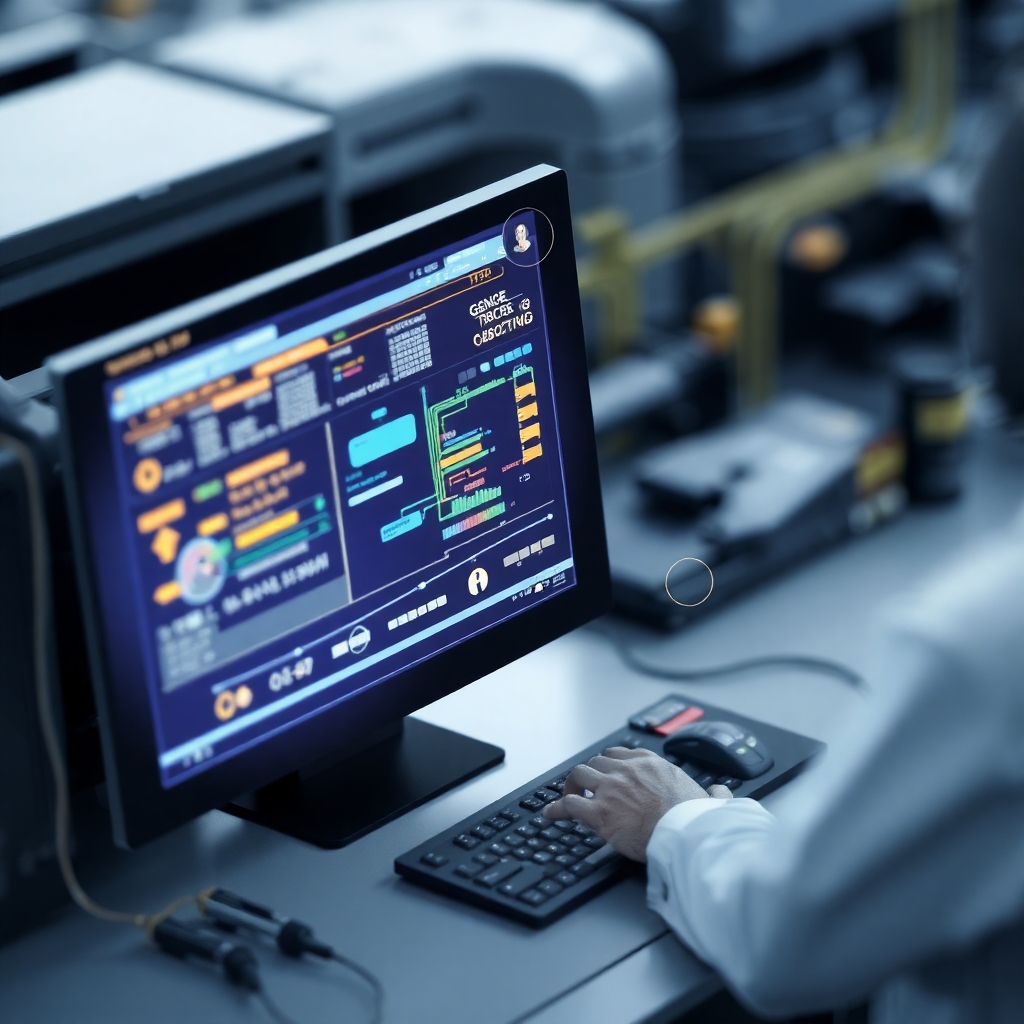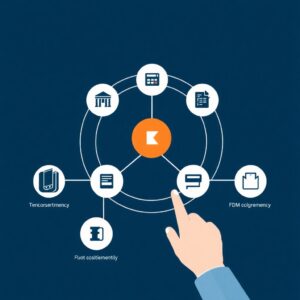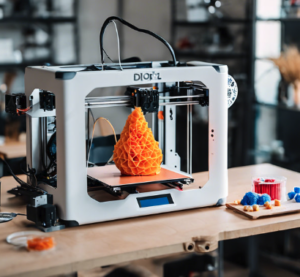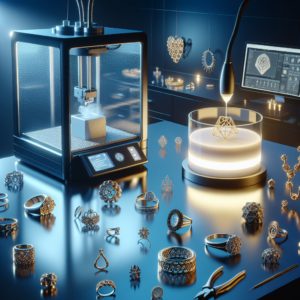FDM Technology for Small Businesses: Accessible Innovation

What is FDM Technology?
Fused Deposition Modeling (FDM), a prominent 3D printing technology, has revolutionized manufacturing by offering a cost-effective and versatile solution for creating three-dimensional objects. Developed by Scott Crump in 1988 and later trademarked by Stratasys, FDM operates on a simple yet efficient principle: melting thermoplastic filaments and depositing them layer by layer to construct an object.
This additive manufacturing technique is particularly appealing to small businesses and startups due to its affordability, ease of use, and scalability. Once restricted to industrial use, FDM printers are now available at various price points, catering to businesses of all sizes. The rise of desktop FDM printers has democratized manufacturing, empowering small enterprises to innovate, create prototypes, and produce customized products efficiently.
Benefits of FDM Technology for Small Businesses
Cost-Effectiveness
One of FDM’s strongest selling points is its affordability. Traditional manufacturing often requires expensive molds, tooling, and bulk production to achieve cost efficiency. FDM eliminates these barriers, allowing businesses to produce items on demand without significant upfront investment.
For small businesses operating on tight budgets, this low-cost entry point is transformative. Entry-level printers can be purchased for as little as $300–$500, while more advanced models with higher precision and larger build volumes range from $1,000–$5,000. Additionally, the materials used in FDM, such as PLA and ABS, are relatively inexpensive compared to specialized materials required in other manufacturing methods.
Ease of Use
Modern FDM printers are designed with user-friendliness in mind. Features like plug-and-play setup, touchscreen interfaces, and pre-configured settings simplify the process, enabling even those with minimal technical expertise to start printing quickly. Online resources, tutorials, and active user communities further lower the learning curve for small business owners.
Scalability
FDM technology is not just for prototyping; it can also handle small-batch production runs. Startups testing new products can use FDM to create limited editions before committing to mass production. This flexibility enables businesses to scale operations at their own pace, reducing financial risk and enhancing agility.
Applications of FDM Technology in Small Businesses
1. Rapid Prototyping
FDM accelerates the prototyping process, allowing businesses to design, test, and refine products efficiently. Traditional prototyping methods can take weeks or even months, whereas FDM enables iterative design cycles within days. This speed-to-market advantage is critical for startups aiming to outpace competitors.
For example, a startup developing ergonomic tools can use FDM to produce multiple design variations, test them with users, and refine them based on feedback. This iterative approach fosters innovation and minimizes costly design flaws.
2. Customized Products
Personalization is a growing trend in consumer markets, and FDM allows small businesses to cater to this demand. Whether it’s creating customized phone cases, tailored medical devices, or bespoke packaging, FDM enables on-demand production of unique items. This capability not only enhances customer satisfaction but also reduces inventory waste by producing items only when ordered.
3. Repair and Maintenance
For businesses reliant on machinery, downtime caused by broken components can be costly. FDM printers can produce replacement parts quickly, minimizing operational disruptions. From gears and brackets to specialized tools, FDM offers a practical solution for in-house repairs.
Choosing the Right FDM Printer for Startups
With countless FDM printers on the market, selecting the right one can be daunting. Here are the key factors to consider:
1. Budget
For businesses just starting, entry-level models like the Creality Ender 3 or Anycubic i3 Mega offer excellent value, balancing affordability and performance. For those requiring higher precision or advanced features, mid-range models like the Prusa MK4 or Ultimaker S3 are worth considering.
2. Print Quality and Speed
Resolution and layer height directly impact print quality. For professional applications, printers capable of 50–100 microns are ideal. Print speed is another consideration; faster printers can handle larger production volumes but may compromise detail.
3. Build Volume
The size of the build plate determines the maximum dimensions of a print. Startups creating large objects, like architectural models or furniture components, should prioritize printers with larger build volumes.
4. Material Compatibility
Different filaments have unique properties suited to various applications. Ensure the printer supports the materials relevant to your business needs, such as PLA for general use, ABS for durability, or flexible TPU for wearable products.
Materials Used in FDM Printing
FDM technology offers a wide range of material options, each suited to specific applications:
- PLA (Polylactic Acid): A biodegradable, plant-based material that’s easy to print and ideal for prototypes or decorative items.
- ABS (Acrylonitrile Butadiene Styrene): Known for its strength and heat resistance, ABS is suitable for functional parts and outdoor use.
- PETG (Polyethylene Terephthalate Glycol): Combines durability with flexibility, making it popular for mechanical components.
- TPU (Thermoplastic Polyurethane): A flexible filament used for creating wearable products, seals, and gaskets.
- Specialty Filaments: Advanced materials like wood-filled, metal-infused, or carbon fiber filaments enable creative applications and add aesthetic value.
Real-Life Success Stories
1. A Tech Startup’s Journey
A small tech startup developing IoT devices leveraged FDM technology to create enclosures for their prototypes. By printing these components in-house, they avoided outsourcing costs and significantly reduced development time. This allowed them to iterate designs rapidly and impress investors with functional prototypes.
2. Enhancing Product Presentation
A local artisan business producing handmade candles used FDM printers to create custom packaging inserts. This elevated their brand image, giving their products a premium feel and allowing them to compete in high-end markets.
Overcoming Challenges with FDM Printing
Despite its benefits, FDM technology has limitations. Here’s how businesses can address common challenges:
1. Warping and Adhesion Issues
Warping occurs when the material cools unevenly, causing prints to deform. Solutions include using a heated bed, applying adhesive sprays, and calibrating temperature settings. Ensuring proper bed leveling also improves adhesion.
2. Maintenance
Regular maintenance ensures consistent print quality. Cleaning the nozzle, tightening belts, and replacing worn parts are essential practices. Investing in high-quality filament reduces clogging and improves reliability.
Integrating FDM into Business Models
FDM technology can be seamlessly integrated into various business models:
1. Collaborative Design Services
Businesses can offer customers the opportunity to co-create designs, enhancing engagement and satisfaction. For example, a company making trophies can let clients customize shapes, engravings, or colors.
2. Subscription-Based Services
Providing monthly 3D printing plans allows businesses to diversify revenue streams. Clients can subscribe for access to printing services, whether for prototypes, promotional items, or personal projects.
3. Hybrid Manufacturing
Combining FDM with traditional methods creates efficient workflows. For example, using FDM for initial prototypes and molds, then transitioning to injection molding for mass production.
Sustainability in FDM Printing
Sustainability is increasingly important for modern businesses. FDM offers several eco-friendly benefits:
1. Use of Biodegradable Materials
PLA, a popular FDM filament, is derived from renewable resources like cornstarch. Its compostable nature reduces environmental impact.
2. Waste Reduction
On-demand production minimizes material waste by eliminating excess inventory. Failed prints and scrap materials can be recycled into new filaments using specialized machines.
The Future of FDM Technology for Small Businesses
The future of FDM looks promising, with advancements poised to enhance its capabilities:
- Multi-Material Printing: Printers capable of combining multiple materials in a single object will unlock new design possibilities.
- AI Integration: AI-driven software can optimize designs for FDM, reducing material use and improving structural integrity.
- Smart Filaments: Materials with embedded sensors or unique properties, like self-healing plastics, are on the horizon.
FDM technology is a game-changing tool for small businesses and startups. Its affordability, versatility, and accessibility empower entrepreneurs to innovate, reduce costs, and compete effectively in dynamic markets. By integrating FDM into their operations, businesses can unlock new opportunities, enhance customer satisfaction, and achieve sustainable growth.
Visit our other website: machinepwr.com






